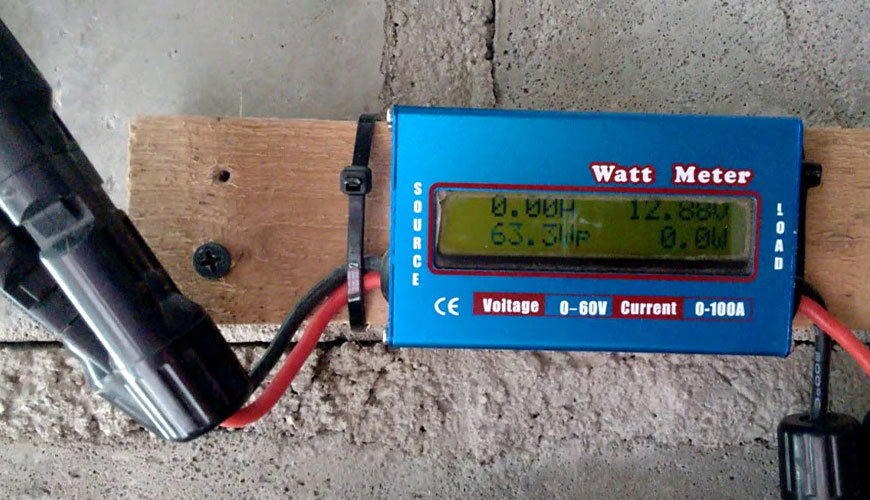

EUROLAB, with its state-of-the-art accredited laboratories and expert team, provides precise and fast testing services within the scope of EN ISO 14934-2 testing. EN ISO 14934-2 defines three methods for the calibration of total hemispherical radiometers and total heat flux meters exposed to a well-defined radiation from a radiant heat source.

The equipment is designed to minimize effects from convective heat transfer during calibration. It is important to note that the instruments measure a combination of radiant and convective heat transfers when used in practice. Second, it will depend on the design of the heat flow meter, its orientation, local temperature and flow conditions, and the temperature of the cooling water.
Many fire testing methods specify the radiation level and therefore it is of great importance that the radiant heat flux be well defined and measured with sufficient accuracy. Radiant heat transfer is also the dominant mode of heat transfer in most real fires.
In practice, the radiant heat flux is usually measured with Schmidt-Boelter (thermopil) or Gardon (foil) type total heat flux meters. Such meters record the combined heat flow to a cooled surface by radiation and convection. The contribution to heat transfer by convection is mainly dependent on the temperature difference between the surrounding gases and the sensing surface and the velocity of the surrounding gases. However, it will also depend on the size and shape of the heat flow meter, its orientation, and the temperature level close to the coolant temperature. In many practical situations in fire testing, the contribution from convection to the sensing surface of the device can be as much as 25% of the radiant heat flux. Therefore, it is always necessary to determine and control this part.
To determine the fraction of the total heat flux due to radiation, a calibration scheme has been developed in which the primary calibration is performed on two different types of heat flow meters: a radiation-only total hemispherical radiometer and a total heat flux meter sensitive to both radiant heat transfer and convective heat transfer (most often used).
Comparing measurements between two types of meters in secondary (or transfer) calibration methods allows characterizing the effect of convection in the method. Whenever possible, in all calibrations and measurements of the radiative heat flux, uncertainty calculations should include the uncertainty associated with the removal of the convective component. For secondary calibration methods, the combined use of hemispheric radiometers and total heat flux meters makes it possible to estimate the convection contribution. The same arrangement can be used in the calibration of fire test methods.
EUROLAB assists manufacturers with EN ISO 14934-2 test compliance. Our test experts, with their professional working mission and principles, provide you, our manufacturers and suppliers, the best service and controlled testing process in our laboratories. Thanks to these services, businesses receive more effective, high-performance and quality testing services and provide safe, fast and uninterrupted service to their customers.
To get an appointment, to get more detailed information or to request an evaluation, you can ask us to fill in our form and reach you.